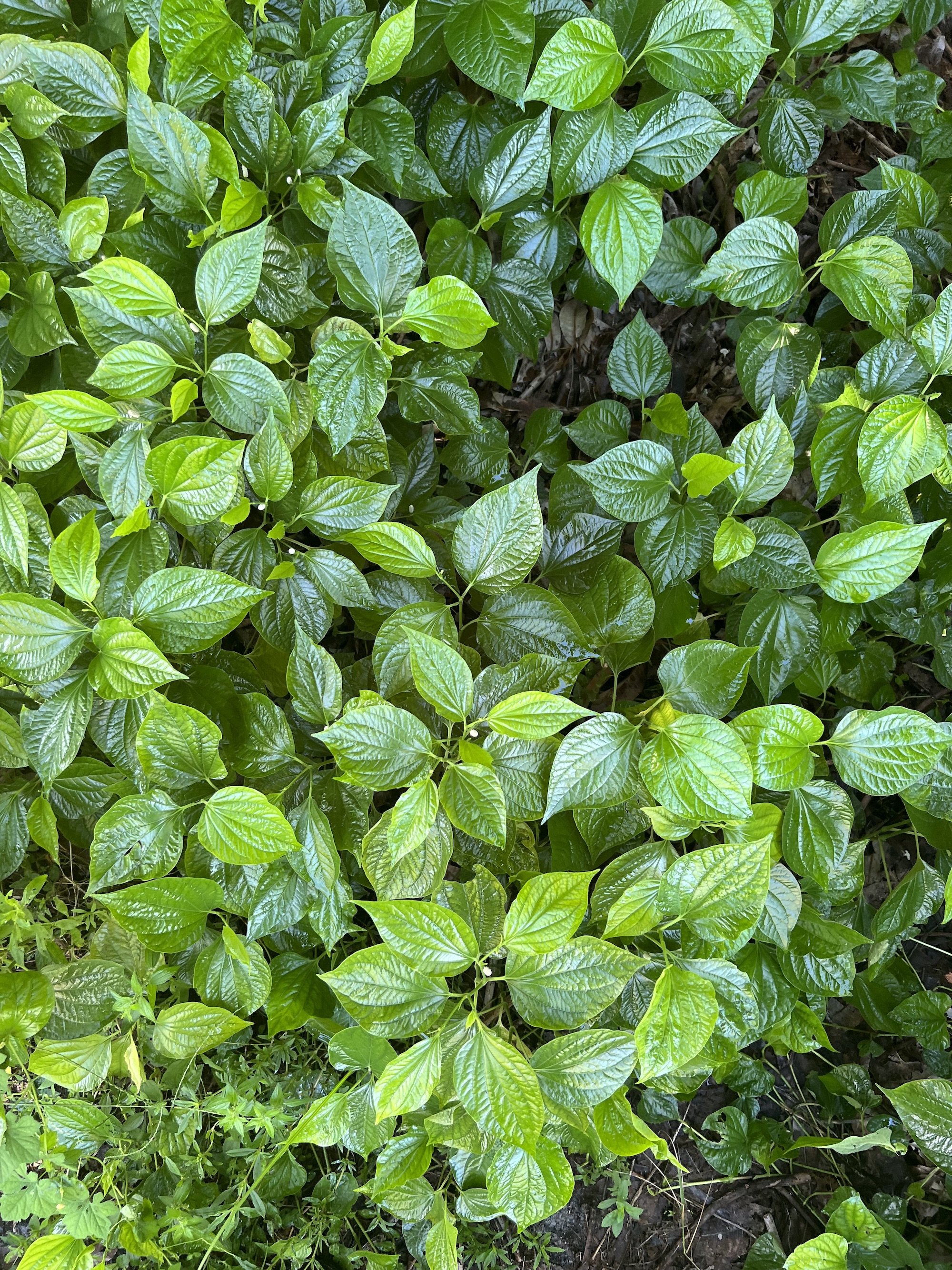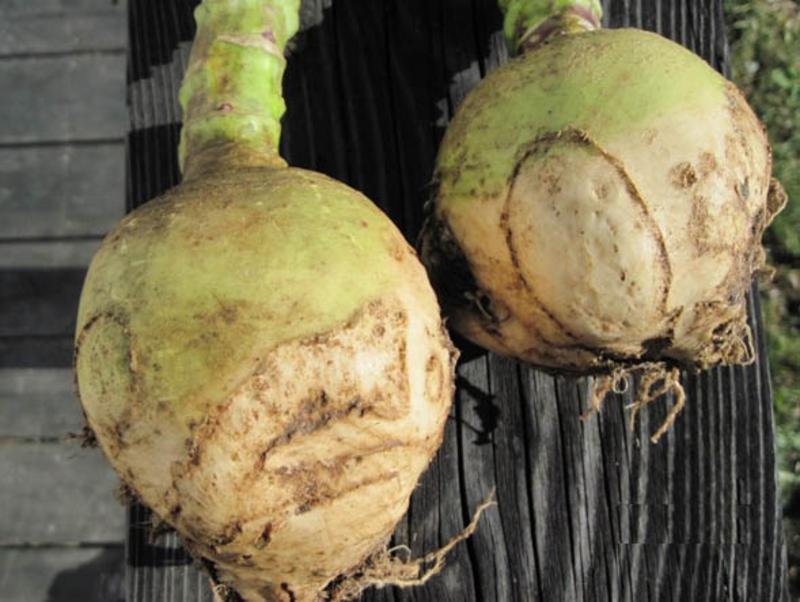
Plant Profiles
Mustard Seed
The yellow condiment that we all have in the fridge is indeed made from the seeds of the mustard plant. There are many different varieties of mustard that are used for mustard production, and many different mustards that range from smooth to chunky. Mustard seed is also commonly used whole in various dishes.
Canola
Most of us are familiar with canola oil on the shelf in the grocery store. Although the fields of endless yellow flowers that precede the seed that will be pressed to make the oil are beautiful to look at and the plant is produced globally, there is great controversy over this plant’s presence in the Pacific Northwest.
Black Radish
This rough-skinned radish packs a pungent punch similar to its horseradish cousins. Black radishes are known for being highly nutritious and used for medicinal purposes, and have histories of common use in cooking throughout Eastern Europe and in many Jewish communities.
Daikon Radish
A large, elongated white radish with light green shoulders, commonly used in Korea for kimchi and other ferments. This storage root has a nice balance of heat and sweetness, and although the traditional variety is white and green, daikon radishes range from pure white to bright purple all the way throughout.
Salad Radish
From red to white to purple to little snow-tipped breakfast radishes, salad radishes are all harvested when small, crisp, spicy, and sweet! Typically available in fresh bunches with their greens (which are delicious cooked) in the shoulder seasons of spring and fall in the PNW.
Watermelon Radish
White and green on the outside with a bright magenta pink burst in the center, watermelon radishes are named for their color and for their sweetness that is accompanied by mild to pungent spice. Absolutely beautiful in salads, slaws, pickles, and as a garnish. Most salad radishes are harvested when they’re sweet and young, but watermelon radishes are a storage radish that get sweeter as they get bigger and experience a few frosts.
Maca (Peruvian Ginseng)
Maca, a tiny turnip-looking root, is one of many plants that has been put up onto the precarious “superfood” pedestal. There is no doubt that this powerful little medicinal Brassica root from Peru has its place in this world as medicine, but the global hype over superfoods often has detrimental effects on the communities that the plant came from. In addition to its medicinal qualities, maca can be ground into a powder and used to make a hot chocolate-like drink.
Horseradish
A long true root that grows more like burdock (Asteraceae) than it grows like a radish with a punch-you-up-the-nose heat that is blunt and immediate with less complicated flavors than wasabi is known for. Due to wasabi’s limited growing conditions and how easily horseradish grows, most of the wasabi paste we eat with our sushi is mixed with horseradish and green food coloring.
Wasabi
Similar to the horseradish root, wasabi is actually a rhizome harvested for a root-like stem, like a kohlrabi, and it has a more rounded sweet flavor in addition to the punch-you-up-the-nose heat. Due to its limited growing conditions and the ease with which horseradish grows, most of the wasabi paste we eat with our sushi is mostly horseradish and green food coloring. Regardless of which one is getting your sinuses dripping, it’s clear that these two Brassicas bring the heat like no others.
Rutabaga
Known for having a rich, creamy, yellow flesh and dark purple shoulders, rutabagas are one of the many storage roots that keep us fed all winter long. With a rich flavor similar to Yukon gold potatoes, rutabagas are amazing roasted, made into fries, pureed into soups, or simply sautéed in butter and garlic and enjoyed as is.
Gilfeather Turnip
This sweet and creamy cross between a turnip and rutabaga is a New England heirloom, so precious to the area it has been declared the state vegetable. Compared to rutabagas, Gilfeather turnips have green shoulders, not purple, and they have a white flesh, not yellow. One big Gilfeather turnip is enough for a meal or two, definitely worth including in your roasted root medleys. Photo - Southern Exposure Seed Exchange
Purple Top Turnip
The humble turnip, a storage root that offers a soft sweetness in the middle of winter. Although not as exciting as some of the veggie celebrities at the market, these turnips are so tasty in a roasted root medley drizzled with aioli or pesto or even just salt. Add cubes to a soup or puree for a creamy soup. Make fries, slice into thin matchsticks and stir-fry—you can do pretty much anything with a turnip.
White Salad Turnip
Also known as Hakurei Turnips, Tokyo Turnips, or Japanese Turnips, this is the turnip that will actually make you excited when you hear the word turnip. Unlike storage turnips like the purple top turnip, this tender baby turnip is super sweet, supple, and absolutely delicious eaten raw as is or with a dip. And unlike their radish cousins, white salad turnips have completely hairless stems and greens that are much like mizuna or bok choy, perfect for stir-fries. From root to shoot, this is turnip is a treat!
Kohlrabi
Unlike a root, kohlrabi sits right on top of the soil and is the nlarged stem of a Brassica plant. It’s is a crisp and fresh treat, somewhere between a tender broccoli stem, a sweet white salad turnip, and crunchy jicama, and it is generally enjoyed raw. Slice and dip into hummus, chop finely into a slaw, plop them into a soup, roast them up, or make fries!
Arugula
Sometime referred to as Rocket, arugula is known for having soft delicate greens with a mild-to-pungent spicy mustard flavor. As with all mustard greens, arugula makes for a wonderful salad balanced with goat cheese and fresh fruit, and the more lobey varieties have a beautiful leaf shape that looks gorgeous in salads.
Bekana Mustard
This lime-green colored leaf with juicy white stems, also known as Tokyo Bekana, is somewhere between bok choy, mizuna mustard, and Chinese mustard, with a very mild sweet flavor. Young greens make for a glowing, delicate salad, and bunches make for a wonderful stir-fry.
Bok Choy
Bok choy, known for its super thick juicy stems that are sweet and crisp when eaten raw and so juicy when stir-fried or served in soups. The super short squat little baby bok choy, or Shanghai Bok Choy, is often sautéed in halves and laid on top of white rice or being added into rich broths and bowls of ramen. Larger white-stemmed bok choys can be chopped into soups and stir-fries.
Gai Lan
Also known as Chinese Broccoli, this green has full juicy stalks surrounded by broccoli-to-bok choy-like greens that sometimes has small broccoli florets on top depending on the season, perfect for stir-fries, soups, and sautées. Chinese Broccoli cross is the mother of broccolini, a similarly thick-stemmed broccoli with fat florets resulting from a cross with actual broccoli.
Chinese Mustard
Also known as Gai choy or heading mustard, this green is somewhere between Bekana mustard, bok choy, and Napa Cabbage. It comes with a sweet juicy stem and mildly pepper greens, great lightly steamed or stir-fried or tossed into some hot broth.
Miz America
This mizuna mustard variety is one of the deepest purple greens around, setting it apart from other red mizunas but with the same peppery punch. Absolutely gorgeous addition to salads full of creamy goat cheese and pears and a sweet tangy dressing to balance out the warmth of the greens. Stems are are also crisp and delicious, the entire bunch makes for a great quick stir-fry.




















